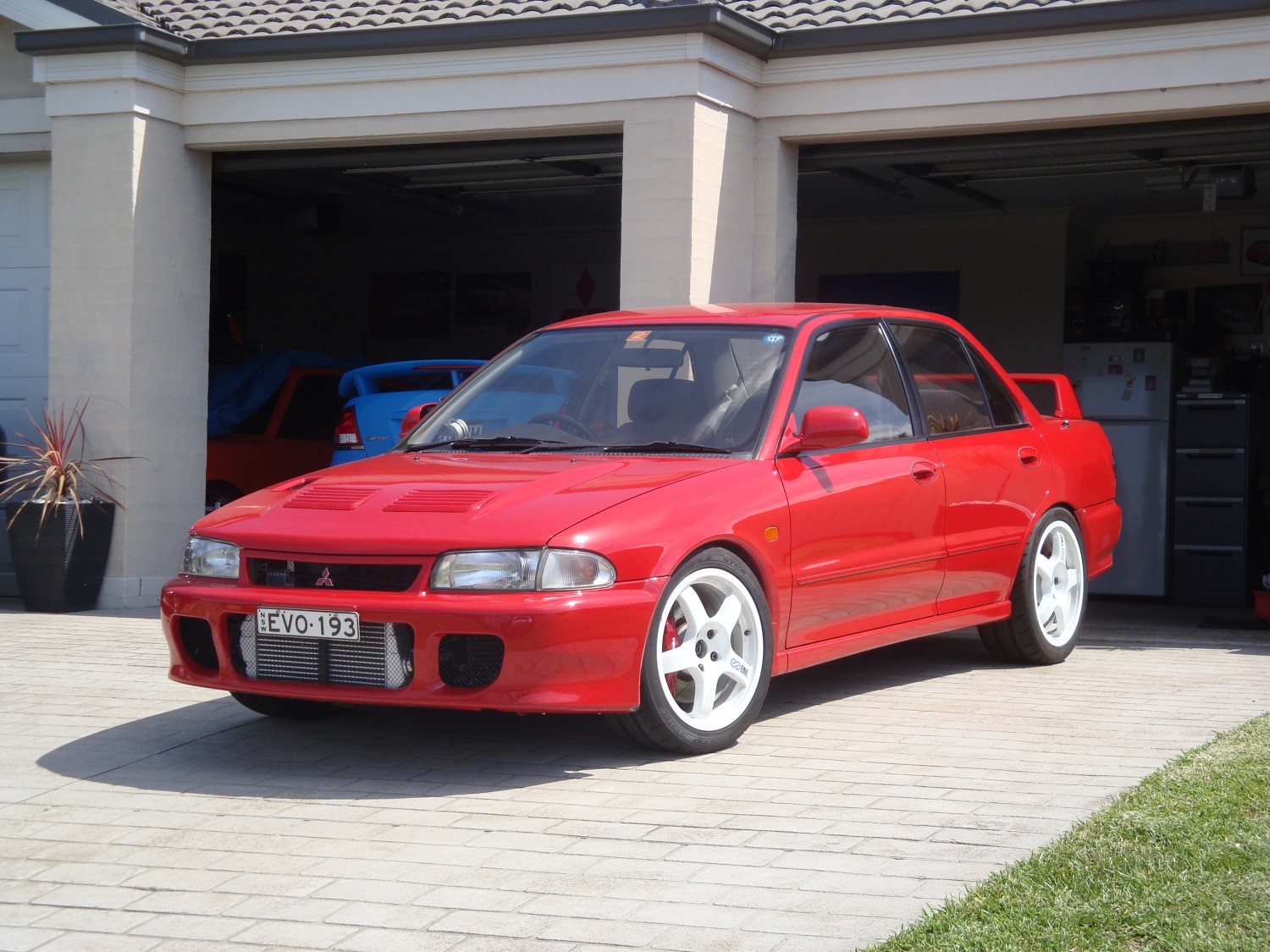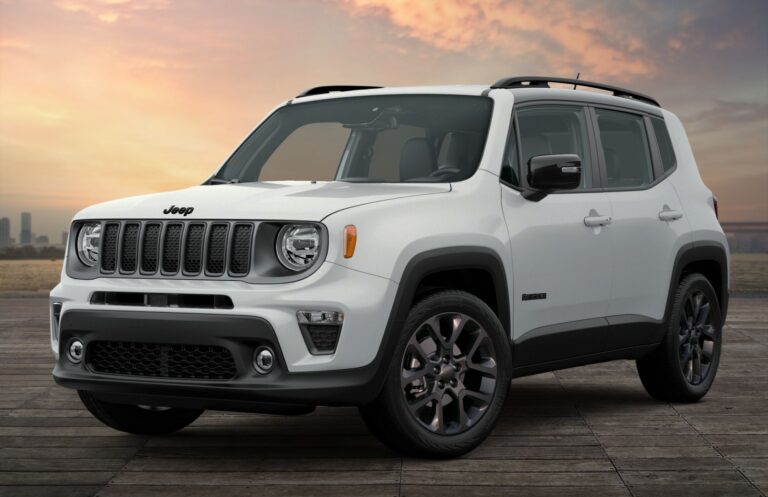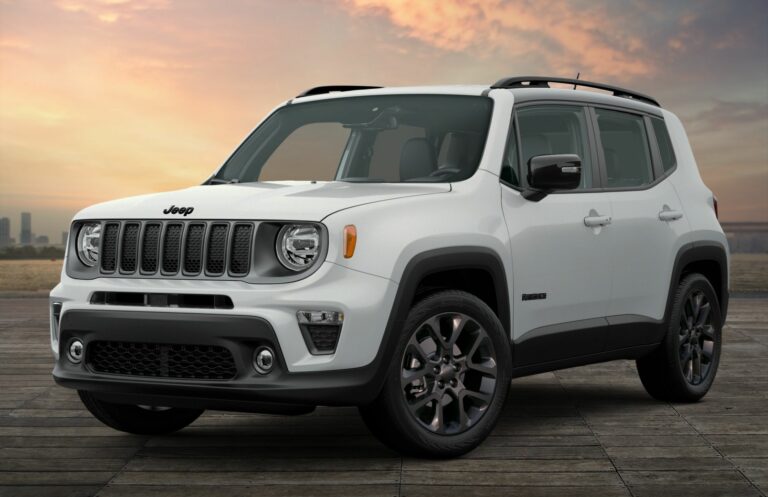1993 Jeep For Sale: Your Comprehensive Guide to Owning a Classic Off-Road Legend
1993 Jeep For Sale: Your Comprehensive Guide to Owning a Classic Off-Road Legend /jeeps.truckstrend.com
Introduction: The Enduring Appeal of the 1993 Jeep
The year 1993 holds a special place in the annals of Jeep history, marking a pivotal moment in the brand’s evolution. It was a year that saw the continued production of beloved models like the rugged Wrangler YJ and the versatile Cherokee XJ, while also introducing the groundbreaking Grand Cherokee ZJ, which redefined the modern SUV. For enthusiasts and adventurers alike, a "1993 Jeep For Sale" isn’t just an advertisement for an old vehicle; it’s an invitation to own a piece of automotive heritage, a testament to American engineering, and a gateway to unparalleled off-road capability.
1993 Jeep For Sale: Your Comprehensive Guide to Owning a Classic Off-Road Legend
These vehicles represent a sweet spot: old enough to be considered classics, yet new enough to offer a degree of modern convenience and robust aftermarket support. They embody the raw, unadulterated spirit of Jeep – simplicity, durability, and go-anywhere prowess. Whether you’re a seasoned off-roader seeking a project, a nostalgic collector yearning for a blast from the past, or a newcomer looking for an affordable entry into the Jeep lifestyle, understanding what a 1993 Jeep offers, and what to look for, is paramount. This guide aims to equip you with the knowledge needed to navigate the market and make an informed purchase.
Key Information: Understanding the 1993 Jeep Lineup
In 1993, Jeep offered a diverse range of vehicles, each catering to different needs and preferences. Knowing the characteristics of each model is crucial when beginning your search:
-
Jeep Wrangler (YJ): The quintessential open-top Jeep, the YJ is instantly recognizable by its iconic square headlights – a design choice that still sparks debate among purists. Available with both the reliable 2.5L AMC 150 I4 and the legendary 4.0L AMC 242 I6 engine, the YJ offered a blend of rugged simplicity and genuine off-road performance. Transmissions included 5-speed manuals (AX-5 for the 4-cylinder, AX-15 for the 6-cylinder) and a 3-speed automatic (32RH). Trim levels ranged from the basic "S" to the more equipped "Sahara" and "Renegade." Its body-on-frame construction and solid axles make it a favorite for customization.

Jeep Cherokee (XJ): Often hailed as one of the greatest SUV designs of all time, the XJ Cherokee from 1993 was a unibody marvel that combined compact dimensions with impressive interior space and unparalleled off-road capability for its class. Like the YJ, it primarily utilized the bulletproof 4.0L I6 engine, paired with either a 5-speed manual (AX-15) or a 4-speed automatic (AW4). Available in 2-door and 4-door configurations, and various trims like Laredo, Limited, and Sport, the XJ is celebrated for its lightweight yet strong structure, making it nimble on trails and surprisingly efficient for its size.
-
Jeep Grand Cherokee (ZJ): 1993 marked the inaugural year for the Grand Cherokee, a vehicle designed to take Jeep into the burgeoning luxury SUV market. The ZJ offered a more refined ride, a significantly more upscale interior, and a host of modern features compared to its siblings. Engine options included the 4.0L I6 and, notably, the powerful 5.2L V8 (Magnum), a first for a mass-produced Jeep SUV. It came with automatic transmissions only (42RE for the I6, 46RH for the V8) and advanced Quadratrac or Selec-Trac transfer cases. Trims like Laredo and Limited offered escalating levels of comfort and amenities, appealing to families and those desiring a more civilized Jeep experience.
-
Jeep Comanche (MJ): While less common, the 1993 Comanche pickup truck was essentially a Cherokee XJ with a pickup bed. Sharing the XJ’s powertrain options and unibody front end, it offered a unique combination of SUV comfort and truck utility. Given its limited production run, finding a 1993 Comanche for sale can be a rare treat for collectors.
.jpg?t=166338629723)
Benefits of Owning a 1993 Jeep

Purchasing a 1993 Jeep isn’t just about acquiring transportation; it’s about investing in a lifestyle. Here are some compelling benefits:
- Unmatched Off-Road Prowess: Regardless of the model, 1993 Jeeps were built with genuine off-road capability in mind. Their robust drivetrains, solid axles (on YJ/XJ/ZJ), and capable 4×4 systems make them formidable on trails, rocks, and mud.
- Durability and Reliability: The 4.0L I6 engine, in particular, is legendary for its longevity, often reaching 200,000 to 300,000 miles or more with proper maintenance. These vehicles were built to last, with simple, rugged mechanicals.
- Vast Aftermarket Support & Customization: The popularity of 1993 Jeeps means an enormous aftermarket industry exists, offering everything from lift kits and bumpers to engine upgrades and interior accessories. You can easily tailor your Jeep to your specific needs and tastes.
- Strong Community and Knowledge Base: Owning a classic Jeep connects you to a passionate global community. Online forums, local clubs, and social media groups are invaluable resources for advice, parts sourcing, and camaraderie.
- Relative Simplicity for DIY Repairs: Unlike modern vehicles laden with complex electronics, 1993 Jeeps are generally straightforward to work on. Many common repairs can be tackled by a home mechanic with basic tools, saving on labor costs.
- Classic Appeal & Nostalgia: These vehicles evoke a sense of adventure and freedom. They turn heads and spark conversations, offering a unique driving experience distinct from modern, homogenized SUVs.
- Value Retention: Well-maintained and unmolested 1993 Jeeps, especially Wranglers and Cherokees, tend to hold their value remarkably well, and some pristine examples can even appreciate over time.
Important Considerations Before Buying
While the allure of a 1993 Jeep is strong, a wise buyer approaches the process with a critical eye. Here are crucial considerations:
- Rust is the Enemy: Given their age, rust is the primary concern, especially in regions that experience harsh winters or coastal climates. Inspect the frame (especially on YJs), rocker panels, floorboards, suspension mounting points, and around the gas tank. Surface rust is manageable; extensive frame or structural rust is a deal-breaker.
- Mechanical Condition: Pay close attention to the engine (smoke, leaks, strange noises), transmission (smooth shifts, no slipping), transfer case (engages properly, no grinding), and axles. Check for fluid leaks everywhere.
- Suspension & Steering: Worn ball joints, tie rod ends, control arm bushings, and leaf springs (YJ/XJ rear) are common. Look for excessive play in the steering wheel and uneven tire wear.
- Electrical Gremlins: Aging wiring can lead to issues with lights, gauges, power windows, and sensors. Test every electrical component.
- Maintenance History: A vehicle with documented maintenance records is always preferable. It indicates a conscientious owner and provides insight into the vehicle’s past care.
- Previous Modifications: While customization is a benefit, poorly executed modifications can lead to problems. Inspect lift kits for proper installation, welding quality, and compatibility. Be wary of heavily modified vehicles unless you’re confident in the work or plan to redo it.
- Intended Use: Be realistic about your needs. A heavily modified trail rig might not be ideal for daily commuting, and a pristine collector’s item shouldn’t be thrashed on the trails.
How-To Guide: The Buying Process
Finding and purchasing the right 1993 Jeep requires patience and diligence.
- Research & Set Priorities: Decide which model (YJ, XJ, ZJ, MJ) best suits your needs. Prioritize what’s important: off-road capability, comfort, project potential, or daily driver reliability.
- Where to Look:
- Online Marketplaces: Craigslist, Facebook Marketplace, eBay Motors.
- Dedicated Forums & Communities: Jeep-specific forums (e.g., JeepForum, NAXJA for XJs) often have classified sections where enthusiasts sell well-maintained vehicles.
- Specialty Dealers: Some dealerships specialize in classic or off-road vehicles.
- Word of Mouth: Let friends and family know you’re looking.
- Initial Contact & Questions: When you find a promising listing, ask key questions:
- Why are they selling?
- How long have they owned it?
- What’s the mileage?
- Any known mechanical issues or rust?
- What maintenance has been done recently?
- Are there maintenance records?
- Thorough Inspection (Pre-Purchase Inspection – PPI): This is the most critical step.
- Bring a Checklist: Cover all the points mentioned in the "Important Considerations" section.
- Inspect Top to Bottom: Look for rust, leaks, worn tires, cracked hoses, fluid levels, and overall condition.
- Bring a Magnet: Use it to detect bondo over rust spots.
- Get Underneath: Check the frame, suspension components, exhaust, and drivetrain for damage or excessive wear.
- Professional PPI: If you’re serious, especially for an expensive or distant vehicle, invest in a pre-purchase inspection by an independent mechanic specializing in Jeeps or 4x4s.
- Test Drive:
- Cold Start: Listen for engine noises.
- Listen & Feel: Pay attention to engine sounds, transmission shifts, steering feel, and brake performance.
- Test 4×4: Engage 4WD (Hi and Lo) if possible, ideally on a loose surface, to ensure it works.
- Check HVAC & Electronics: Ensure heating, AC, radio, power windows, and lights function.
- Negotiation: Armed with your inspection findings, negotiate fairly. Be prepared to walk away if the price isn’t right or if significant hidden issues arise.
- Paperwork: Ensure the title is clear, matches the VIN on the vehicle, and is signed correctly by the seller. Understand your local registration and insurance requirements.
Types and Categories of 1993 Jeeps
As discussed, the 1993 lineup offers distinct choices:
- Wrangler YJ (The Icon): Best for open-air driving, extreme off-roading, and classic Jeep aesthetics. Its body-on-frame design allows for significant modification.
- Cherokee XJ (The Versatile Workhorse): Ideal for those needing a practical daily driver that can still tackle serious trails. Its unibody construction is surprisingly robust and offers a car-like ride.
- Grand Cherokee ZJ (The Comfortable Cruiser): Suited for buyers seeking a more refined SUV experience with more amenities, better on-road manners, and available V8 power, while retaining impressive off-road capabilities.
- Comanche MJ (The Rare Utility): A niche choice for collectors or those who need a compact, unique Jeep pickup.
Tips for a Successful Purchase
- Patience is Key: Don’t jump on the first Jeep you see. The right one will come along.
- Set a Realistic Budget: This includes the purchase price, immediate maintenance (fluids, filters, spark plugs), and potential repairs.
- Join Forums: Engage with online communities before and during your search. Their collective knowledge is invaluable.
- Don’t Fear High Mileage (for 4.0L I6): A well-maintained 4.0L engine with high mileage is often better than a low-mileage one that has been neglected.
- Trust Your Gut: If something feels off about the seller or the vehicle, walk away.
Potential Challenges and Solutions
- Finding an Unmolested Example: Many older Jeeps have been modified. Look for stock or minimally modified vehicles if you prefer a clean slate.
- Rust Remediation: If you buy a rusty Jeep, be prepared for significant bodywork or frame repair. Professional rust repair can be costly.
- Parts Availability: While generally good, specific trim pieces, interior components, or rare engine parts (e.g., for the 2.5L I4 in YJs) might require diligent searching or sourcing from salvage yards.
- Finding Knowledgeable Mechanics: Not all mechanics are familiar with older Jeeps. Seek out specialists or independent shops known for working on 4x4s.
- Insurance Costs: While older vehicles can sometimes be cheaper to insure, modified Jeeps or those with high values might require specialized classic car insurance.
1993 Jeep For Sale: Estimated Price Range
The price of a 1993 Jeep can vary dramatically based on model, condition, mileage, modifications, geographic location, and rarity. This table provides a general estimate for a running, driving vehicle, acknowledging that exceptional examples or project vehicles may fall outside these ranges.
| Model | Condition (Good – Excellent) | Condition (Fair – Good) | Project Vehicle / Parts Car |
|---|---|---|---|
| Jeep Wrangler (YJ) | $7,000 – $15,000+ | $3,000 – $7,000 | Under $3,000 |
| Jeep Cherokee (XJ) | $5,000 – $10,000+ | $2,000 – $5,000 | Under $2,000 |
| Jeep Grand Cherokee (ZJ) | $4,000 – $8,000+ | $1,500 – $4,000 | Under $1,500 |
| Jeep Comanche (MJ) | $8,000 – $20,000+ | $4,000 – $8,000 | Under $4,000 |
Note: Prices are estimates and can fluctuate significantly. "Excellent" condition often implies minimal rust, well-maintained mechanics, and original components. "Project Vehicle" typically requires significant mechanical or body work.
Frequently Asked Questions (FAQ) about 1993 Jeeps
Q: Is a 1993 Jeep a good daily driver?
A: It depends on the model and its condition. An XJ Cherokee or ZJ Grand Cherokee can be a surprisingly good daily driver, especially with the 4.0L I6. A YJ Wrangler is more rugged and less refined, making it less comfortable for long commutes but perfectly viable for shorter ones. Reliability hinges heavily on prior maintenance.
Q: What’s the best 1993 Jeep model for off-roading?
A: All 1993 Jeeps are capable. The Wrangler YJ is generally considered the most direct choice for serious rock crawling due to its short wheelbase and solid axles. The Cherokee XJ is a close second, known for its agile unibody and excellent articulation. The Grand Cherokee ZJ, especially with the V8, offers a comfortable ride and impressive power for trails.
Q: Are parts hard to find for 1993 Jeeps?
A: Generally, no. Thanks to their popularity and shared components (especially the 4.0L engine), most mechanical and many body parts are readily available from aftermarket suppliers, auto parts stores, and salvage yards. Specific trim pieces for less common models or higher trims might require more searching.
Q: What’s the average lifespan of a 1993 Jeep?
A: With proper maintenance, particularly for the 4.0L I6 engine, 1993 Jeeps can easily last 200,000 to 300,000 miles or more. The lifespan often depends more on how well the frame/unibody resists rust and the overall care it receives.
Q: What should be my top priority when inspecting a 1993 Jeep?
A: Rust. Inspect the frame, floorboards, rocker panels, and suspension mounting points thoroughly. Rust is often the most expensive and difficult issue to rectify, potentially making a vehicle unsafe or uneconomical to repair.
Conclusion: Embarking on Your Jeep Journey
The search for a "1993 Jeep For Sale" is more than just a transaction; it’s the beginning of an adventure. These vehicles, from the rugged Wrangler to the versatile Cherokee and the refined Grand Cherokee, offer a unique blend of heritage, capability, and timeless appeal. While their age necessitates a careful and informed approach to purchasing, the rewards of owning such a classic are immense. With thorough research, a meticulous inspection, and a clear understanding of your needs, you can find a 1993 Jeep that not only meets your expectations but also becomes a cherished companion for years of exploration and enjoyment. Happy hunting, and welcome to the Jeep family!






